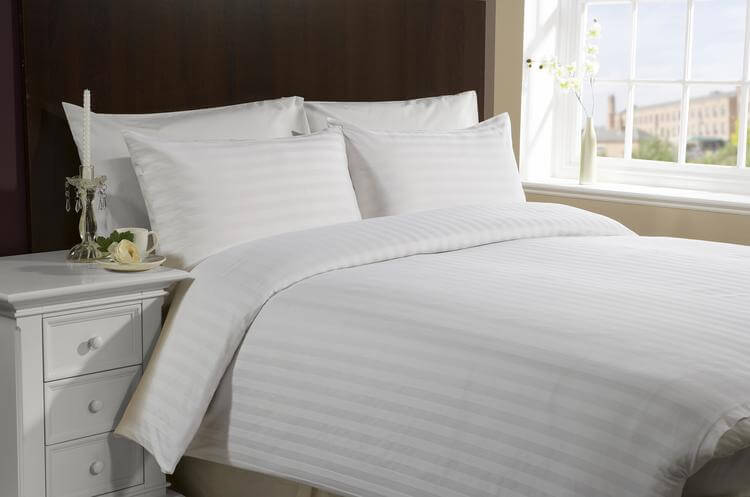Top 7 best bedding materials: ranking 2021-2022 for quality
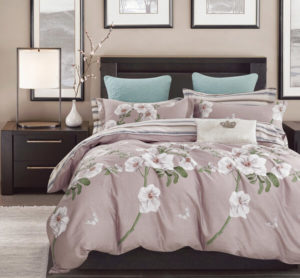 In order to choose the right quality bedding material, it is important to know all the advantages and disadvantages of each option.
In order to choose the right quality bedding material, it is important to know all the advantages and disadvantages of each option.
Only fully studied information will allow you to make a purchase, which you will be satisfied not even for months, but for years.
Rating of the best materials for bed linens
| Location | Name | Price | Rating |
|---|---|---|---|
| Best bedding material by price/quality for 2021-2022 | |||
| 1 | Calico | Check price | 9.9 / 10 |
| 2 | Mako-satin | Learn the price | 9.8 / 10 |
| 3 | Percale | Learn the price | 9.8 / 10 |
| 4 | Poplin | Learn the price | 9.7 / 10 |
| 5 | Satin | Learn the price | 9.6 / 10 |
| 6 | Satin-Lux | Learn the price | 9.4 / 10 |
| 7 | Strap Satin | Learn the price. | 9.3 / 10 |
Content
How to choose a material for bed linen in the price/quality ratio?
Sleeping is the key to health. A quality sleep depends on bedding: mattress, pillow and blanket. Also important is the bed linens on which we sleep. That is why it is necessary to choose it very seriously.
Let's find out what to look for when choosing a material for bedding.
Density
One of the important parameters on which the durability and quality of the entire bedding depends. The density value tells how many threads are in one square meter of fabric. A higher figure will ensure prolonged use of the fabric.
There is a special classification of the density of the fabric (values are given per square centimetre):
- low - 25-35 (cambric);
- below average - 35-60 (calico);
- medium - 51-64 (linen);
- above average - 65-94 (Turkish silk);
- high - 95-200 (sateen or poplin);
- very high - over 200 (Japanese silk, percale).
Unfortunately, the manufacturer rarely indicates this data on the label, so it is best to remember these figures before you go to the store.
Tailoring quality
Pay attention not only to the material, but also to the quality of sewing this fabric, because the manufacturer poor quality processing can ruin even an excellent material.
If large parts of the bedding (sheet, duvet cover) are sewn from several parts, they will not last long.
It is important to inspect and seams - they must be flat, and the edges neatly trimmed.
The entire material should be sewn with a special linen stitch, in which the cuts are hidden completely. This will prevent the materials from cracking.
Packaging
On the label, the manufacturer should indicate information about the material used, as well as recommendations for its care and use.
It is worth paying attention not only to the information contained, but also to the design of the label: whether the text is not smeared, whether there are grammatical errors.
The manufacturer, which cares about its reputation, will not allow such blunders.
Smell and paint
You can tell the quality of the dye even by the smell of the material: it should smell like textiles, not chemicals. The smell of chemicals and mold signals a low grade of dye. Such material quickly fades, and in addition can stain the skin and cause allergic reactions.
The quality of the dyes used can be checked when buying the fabric - rub it with the palm of your hand or a dry cotton pad.
The back side of the material should be almost as bright as the front. If the difference between them is significant, it means that the dye is applied superficially and will soon wear off.
The label should specify the maximum washable temperature of the bedding. If it is 60 degrees or higher, it means that the paint used is of high quality.
Best bedding material by price/quality for 2021-2022
Let's describe the best materials to use for sewing bedding.
Calico
Production begins with a plain white calico cloth, and then the 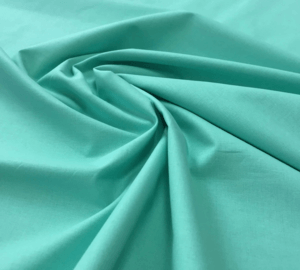
Such linen consists entirely of natural cotton fibers.
In the manufacture of fabric is used the usual plain weave, which greatly facilitates the production process and makes the fabric affordable.
Pure white calico is used more often than other fabrics for making bedding for hospitals and medical boarding schools.
Cotton composition and simple weaving of yarns provides excellent overlapping of colors and their brightness. Printed calico is no longer called bleached, but printed. Durability of the pattern depends on the quality of dyeing.
Linen is divided into types according to density:
- 100 grams / sq.m. - The cheapest option. It is better to use such calico for guest bedding or cottage. In everyday use, it will not last long.
- 125 gr / sq.m. - Most manufacturers make the fabric from calico with exactly this density. Such bedding has the best price-quality ratio.
- 140 grams per square meter - Elite calico, with which nothing will happen even after 100 washings.
Pros
- Inexpensive. A simple method of weaving facilitates the process of production, so the material is cheaper than sateen or poplin.
- Naturalness. In its composition the fabric has only natural fabrics.
- High abrasion resistance. And the higher the density, the longer will last calico.
- Hygroscopicity. Calico is ideal for people suffering from sweating, thanks to the excellent moisture absorption.
- Hypoallergenic. As a part of coarse calico has no components that would cause an allergic reaction.
- A richness of patterns. On calico there is a good dyeing. And the brightness remains for a long time.
Disadvantages
- Shrinkage. After the first wash, calico bedding can shrink. But this can be avoided by buying a fabric with a high density.
- Long drying time. Because of the good moisture absorption of the fabric dries up quite a long time.
Mako-satin .
It is from mako-satin that linens with voluminous patterns are made (in 2021 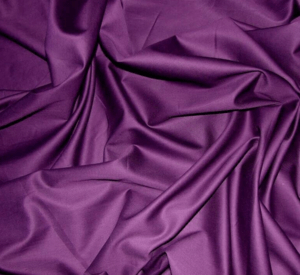
The composition of this fabric includes only the highest quality cotton. The material is characterized by pleasant tactile qualities and a distinctive sheen.
In the textile industry, makosatin is preferred only by the highest-class manufacturers: this material is usually used for the production of elite ranges of bed linens.
Pros of
- High wear resistance and durability. With proper care, makosatin does not lose its properties over 10 years.
- The naturalness of composition. Mako-satin is made only of cotton fibers.
- The absence of electrification.
- Drawing on three-dimensional patterns. Special long-staple structure provides three-dimensional design. No other material can achieve this effect.
- No shrinkage. Even after numerous washes, the makosatin does not shrink.
Disadvantages
- The main disadvantage of makosatin is its high cost. However, once you pay a good amount, you can get a quality and pleasant to the touch bed linen.
Percale
At the moment, the main purpose of percale is to make bed linen. 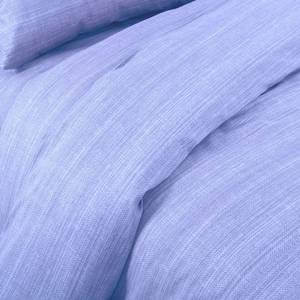
Percale fabric has long gained the love of manufacturers and buyers. The main feature of percale fabric is a special weave, which ensures its durability and increased strength.
Proper production of percale is based on the use of only natural fibers.
Unscrupulous manufacturers may pass off the addition of synthetic fibers as a fabric advantage, but this is far from being true.
Percale can be monochrome or printed.
Pros
- Wearability. Percale bed linen is simply indestructible.
- Price. The cost of percale is about the same as poplin, and a little cheaper than sateen.
- Antistaticity. Natural cotton beddings do not accumulate in itself statics.
- Unpretentiousness in care. No additional actions, except washing and ironing are not needed.
- Good moisture absorption.
- Minimal shrinkage, which is provided by a special dense weave of fibers.
Disadvantages
- Like many other cotton materials, percale takes quite a long time to dry. This is worth considering if you want to wash your bedding in the morning, and put it on again in the evening.
Poplin
Falling asleep on such linen, you feel only relaxation and complete comfort. Bedding 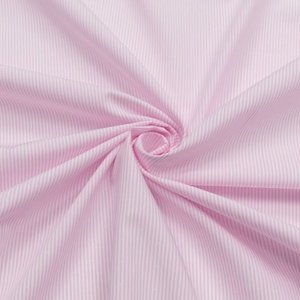
The feel of the fabric is pleasant and soft.
Poplin is also a cotton fabric, which is distinguished by a special weave of fibers. Sometimes the manufacturer may also use artificial fibers for weaving. This is not to say that it is always a bad thing.
If the synthetic materials are chosen correctly, then such poplin is of high quality and pleasant tactile sensations.
Pros of
- Easy care.
- Soft and pleasant to the touch.
- Excellent air permeability.
- Long life and durability.
- Hardly creases.
- Dries quickly.
- Suitable even for allergic persons.
- Can be used at any time of year.
- Affordable cost.
- Paint adheres well.
Cons
- Shrinks by 10% when washed.
Satin
The luster of sateen is rightly compared to silk shimmers. And according to the basic 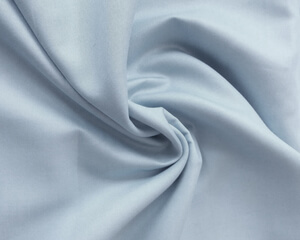
The raw material for manufacturing sateen is also natural cotton.. Sateen is considered particularly valuable if it is made from elongated fibers (Egyptian cotton).
Sateen will last a long time. But when using it, some simple recommendations should be followed.
For example, the fabric should not be dried in direct sunlight, even when turned.
Pros of
- Durability and strength.
- Pleasant shine.
- Gentle to the touch, soft.
- Provides free air circulation.
- Only safe materials are used for dyeing.
- Hypoallergenic composition.
- Does not deform during washing and does not shed.
- Provides comfort and relaxation during sleep.
Cons
- More suitable for summer sleep than for winter sleep.
- Requires special care.
- High cost.
Satin-lux
Satin-lux is an improved version of regular sateen, which has increased 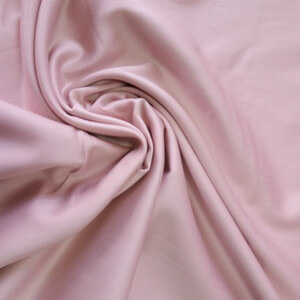
The material is moderately dense, pleasant to the touch and soft. Sateen-lux retains its shape perfectly even after prolonged use.
The front side is silky and shiny.
Often satin-lux is dyed monochrome, but printed or printed versions can also be found. Only the densest medium length fibers are used to make the fabric.
In the production process, they are sanded to perfect smoothness and luster.
Pros of
- Safety and softness.
- Naturalness.
- Hygroscopicity.
- Hypoallergenic.
- Able to warm in the cold and cool in the heat.
- Attractive appearance.
- Good holds shape during sleep and washing.
- Resistant to the formation of lint and color fade.
Disadvantages
- Shrinks when washing in hot water.
- High cost.
- Sensitivity to ultraviolet light.
Strip-satin
Strip-satin resembles expensive jacquard in its characteristics: it is the same 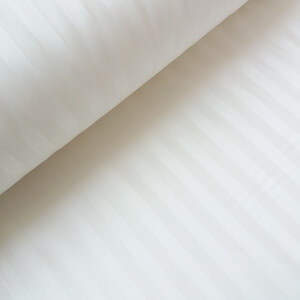
And the stripes are obtained not by dyeing, but thanks to a special weaving of fibers of different shades. Compared to jacquard, the colors of which are dominated by flowers and abstraction, striped sateen looks more restrained and calm.
The color scheme of the material is also usually pastel - it can be peach, soft pink, pistachio, milk, champagne, coffee or chocolate.
Thread dyeing is performed only with the highest quality dyes, so the material retains the saturation of shades for a long time.
Advantages of
- Hypoallergenic.
- The naturalness of composition.
- High durability.
- No electrolysis.
- Pleasant tactile sensations.
- Easy care.
Cons
- High cost.
What company to choose?
Here is a rating of the best domestic manufacturers of bed linen:
- Monolit;
- ArtPostel;
- Vasilisa;
- Spal Spalych;
- Verossa;
- Cotton Paradise;
- Kazanov.A;
- Cotton Dreams;
- Ecotex;
- Owl and Lark.
Conclusion
All the described materials are characterized by high durability, naturalness and pleasant tactile properties. The only difference is the colors and cost.
Customer Reviews
Helpful video
From the video you will get an overview of the best bedding materials:



